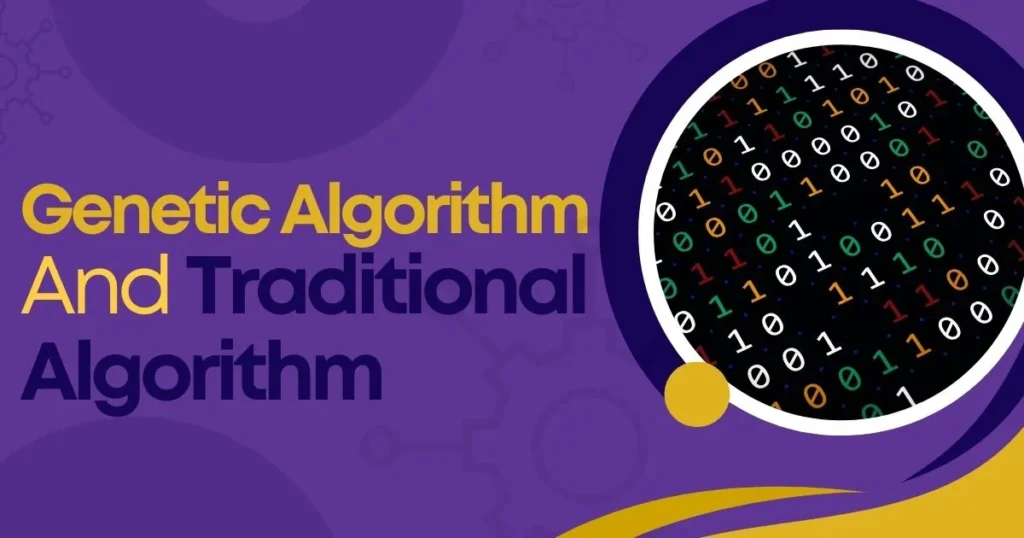Difference Between Genetic Algorithm and Traditional Algorithm: Technology is evolving, and so are the methods we use to solve complex problems. Traditional algorithms have been the backbone of computing for decades, but genetic algorithms are changing the game by introducing an evolutionary approach.
But what exactly is the difference between genetic algorithm and traditional algorithm? Why are genetic algorithms becoming more popular, and how do they compare to conventional methods? Let’s break it down in simple terms. The two most commonly compared types of algorithms are:
- Traditional Algorithms – These follow a fixed set of rules and logic to arrive at a solution.
- Genetic Algorithms – These are inspired by the process of natural evolution and work by trial and error.
But how genetic algorithm is different from traditional algorithms? Why are genetic algorithms becoming popular in fields like data science and digital marketing? This blog by Ze Learning Labb will explore the difference between genetic algorithm and traditional algorithm with examples, advantages, and real-world applications.
This blog will talk about the following:
- Difference between genetic algorithm and traditional algorithm
- Genetic algorithm vs traditional algorithm
- What is genetic algorithm
- Advantages of genetic algorithm over traditional methods
- How genetic algorithm is different from traditional algorithms
- Similarities between genetic algorithm and other traditional methods
What is a Traditional Algorithm?
A traditional algorithm is a step-by-step procedure that follows a fixed set of rules to solve a problem. It uses logic and mathematical operations to arrive at a definite answer.

Examples of Traditional Algorithms
- Sorting Algorithms – Bubble Sort, Quick Sort, Merge Sort
- Search Algorithms – Binary Search, Linear Search
- Mathematical Algorithms – Dijkstra’s Algorithm for shortest path, Euclidean Algorithm for GCD
Characteristics of Traditional Algorithms
- Deterministic – They produce the same output for the same input every time.
- Rule-Based – They follow predefined logic to arrive at a solution.
- Efficient for Simple Problems – Best suited for structured problems with clear rules.
Limitations of Traditional Algorithms
- Struggle with highly complex or unpredictable problems.
- Require precise input conditions to work correctly.
- Cannot learn or adapt on their own.
What is Genetic Algorithm?
So, what is genetic algorithm? A genetic algorithm (GA) is an optimization technique inspired by Darwin’s theory of evolution. It mimics the process of natural selection where the best solutions evolve over generations.
How Genetic Algorithm Works?
Genetic algorithms work in cycles, using techniques like:
- Selection – Picking the best solutions from a group.
- Crossover – Combining two solutions to create a better one.
- Mutation – Making small changes to improve solutions.
- Evaluation – Testing solutions to check their effectiveness.
Examples of Genetic Algorithm Applications
- Optimizing Machine Learning Models
- Stock Market Prediction
- Traffic Flow Optimization
- Personalized Digital Marketing Campaigns

Advantages of Genetic Algorithm Over Traditional Methods
- Can handle complex and uncertain problems.
- Finds solutions where traditional methods fail.
- Does not need exact rules and formulas.
- Learns and adapts over time.
Difference Between Genetic Algorithm and Traditional Algorithm
The primary difference between Genetic Algorithms (GAs) and Traditional Algorithms lies in their approach to problem-solving. Genetic Algorithms are inspired by natural evolution, whereas Traditional Algorithms follow a well-defined sequence of logical steps. Here’s a detailed comparison:
1. Approach
- Genetic Algorithm (GA): Evolutionary approach using selection, crossover, and mutation to iteratively improve solutions.
- Traditional Algorithm: Deterministic or rule-based approach, following a set of predefined steps to find a solution.
2. Search Mechanism
- GA: Uses a population-based search method, evaluating multiple potential solutions simultaneously.
- Traditional Algorithm: Uses a single-solution search approach, refining one solution at a time.
3. Problem-Solving Nature
- GA: Well-suited for optimization problems with complex, nonlinear, or unknown solutions.
- Traditional Algorithm: Effective for structured problems with well-defined rules and procedures.
4. Solution Space Exploration
- GA: Uses randomness and crossover to explore a diverse solution space efficiently.
- Traditional Algorithm: Uses systematic methods like brute force, divide-and-conquer, or greedy approaches.
5. Convergence Speed
- GA: May converge slower but explores multiple solutions in parallel, reducing the risk of local optima.
- Traditional Algorithm: Often faster for well-defined problems but may get stuck in local optima.
6. Deterministic vs. Stochastic
- GA: Stochastic (randomized) in nature, meaning results can vary between runs.
- Traditional Algorithm: Deterministic (fixed output for the same input).
7. Applicability
- GA: Used in machine learning, robotics, scheduling, bioinformatics, and game AI.
- Traditional Algorithm: Used in sorting, searching, pathfinding, database operations, and numerical computations.
If the problem is well-defined with clear rules, a Traditional Algorithm is preferable. If the problem is complex, nonlinear, or lacks a clear path, a Genetic Algorithm is more effective.
Key Differences: Genetic Algorithm vs Traditional Algorithm
| Features | Traditional Algorithm | Genetic Algorithm |
| Approach | Rule-based, fixed logic | Evolutionary, adaptive learning |
| Flexibility | Works with structured problems | Works with complex, uncertain problems |
| Optimization | Requires precise formulas | Uses trial and error to find the best solution |
| Efficiency | Faster for simple problems | Better for complex, multi-variable problems |
| Adaptability | Cannot learn or improve | Learns and evolves over time |
One of the biggest advantages of genetic algorithm over traditional methods is its ability to solve problems without predefined rules. This makes it useful in fields like machine learning, robotics, and data science.
Similarities Between Genetic Algorithm and Other Traditional Methods
Though genetic algorithms are different, they still share some similarities with traditional methods:
- Both aim to solve problems efficiently – Whether using logic or evolution, the goal is to find the best solution.
- Both rely on mathematical models – While traditional algorithms use formulas, genetic algorithms use probability and fitness functions.
- Both require computation – Both approaches need processing power to execute calculations.
Despite these similarities, the difference between genetic algorithm and traditional algorithm is clear—one follows fixed rules, while the other evolves over time.
Why Are Genetic Algorithms Important in Data Science and Digital Marketing?
With the rise of artificial intelligence and big data, genetic algorithms are finding applications in various fields, including:
1. Data Science and Data Analytics
Genetic algorithms are widely used in data science courses and data analytics training to optimize models and find better predictions. They help in:
- Feature selection in machine learning models.
- Clustering and classification problems.
- Optimizing deep learning algorithms.
2. Digital Marketing
In digital marketing courses, genetic algorithms are used to:
- Optimize Google Ads bidding strategies.
- Personalize marketing campaigns based on user behavior.
- Improve SEO by selecting the best-performing keywords.
For those interested in learning more, Ze Learning Labb offers comprehensive courses in Data Science, Data Analytics, and Digital Marketing, where you can explore real-world applications of genetic algorithms.
Which One Should You Choose?
The choice between traditional algorithms and genetic algorithms depends on the problem you are solving:
- If you have a well-defined problem with clear rules → Use a traditional algorithm.
- If the problem is complex, uncertain, and needs optimization → Use a genetic algorithm.
As John Holland, the father of genetic algorithms, once said:
“Genetic algorithms provide robust solutions where traditional methods fail.”
On A Final Note…
The difference between genetic algorithm and traditional algorithm is clear—one follows a rigid rule-based approach, while the other evolves through natural selection. Genetic algorithms are shaping the future of AI, machine learning, and digital marketing. If you are interested in learning how they work in real-world applications, check out Ze Learning Labb’s courses in Data Science, Data Analytics, and Digital Marketing.





